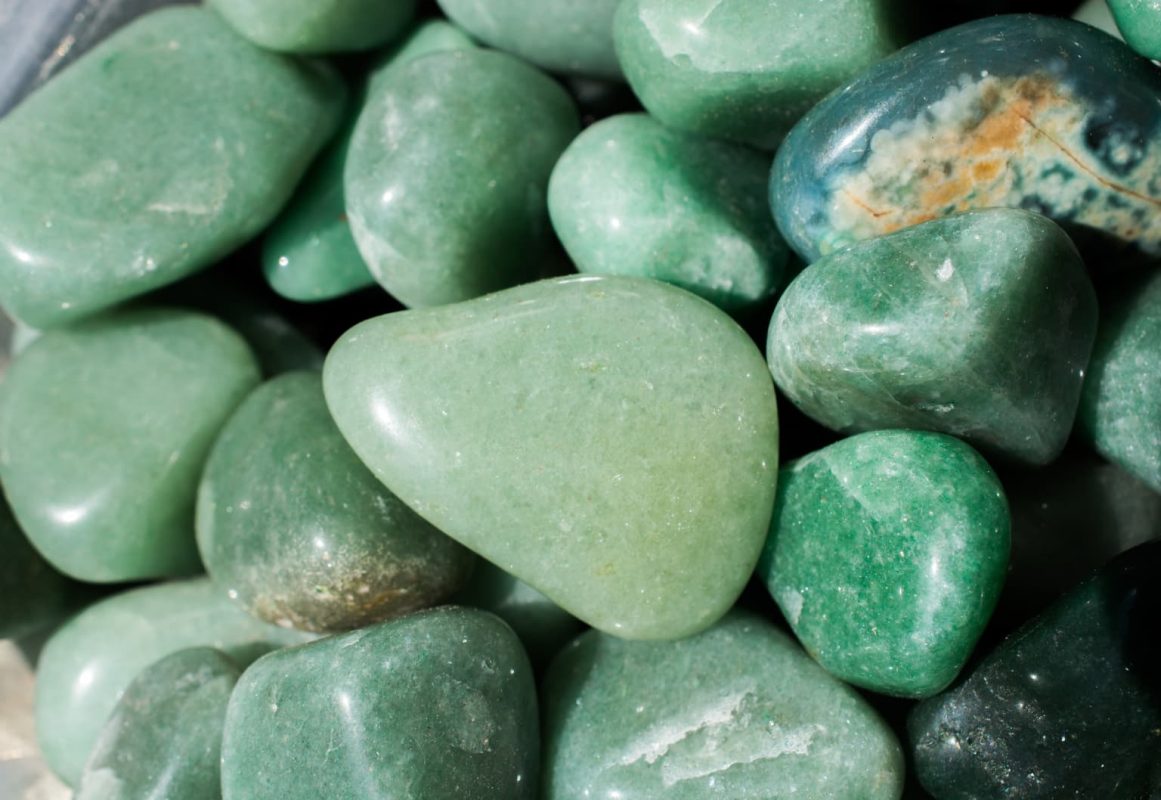
Have you ever wondered how stone is made? It’s a fascinating process that takes millions of years to create natural stone formations. Let’s take a closer look at how this remarkable material is formed.
First, it all starts with the accumulation of minerals, which are solid, naturally occurring substances with a specific chemical composition and structure. Over time, these minerals are subjected to immense heat and pressure, causing them to recrystallize and form solid rock.
One of the most common ways that natural stone is formed is through the cooling and solidification of magma or lava. This process can take thousands or even millions of years, as the molten rock slowly cools and hardens into igneous rock, such as granite or basalt.
Another way that natural stone is formed is through the compression and cementation of sediment, which can create sedimentary rock like limestone or sandstone. This occurs as layers of sediment are deposited and compacted over time, eventually hardening into solid rock.
Marble
is a metamorphic rock that has been used for centuries in various forms of art and architecture. It is formed from limestone that is subjected to high pressure and temperatures, resulting in a crystalline structure. This process, known as metamorphism, causes the limestone to re-crystallize, creating a stone with a unique and beautiful appearance.
Marble is a popular choice for countertops, flooring, and decorative accents due to its luxurious appeal and wide range of color options. From the pure white of Carrara marble to the bold veining of Calacatta marble, there is a type of marble to suit every design aesthetic.
When it comes to care and maintenance, marble does require regular sealing to protect it from staining and etching. However, with proper care, marble can last for generations and continue to add elegance to any space.
Overall, marble is a timeless and versatile material that adds a touch of sophistication to any project, whether it’s a small accent piece or a grand architectural design.
Quartzite
Quartzite is a stunning natural stone that is created from sandstone and quartz. This metamorphic rock is formed when the sandstone is exposed to high pressure and heat, causing the quartz grains to recrystallize and form an incredibly hard and durable stone.
One of the key advantages of is its resistance to heat, making it an ideal choice for kitchen countertops and fireplace surrounds. It is also resistant to scratching and staining, making it a low-maintenance option for both indoor and outdoor use.
When it comes to appearance, Quartzite is known for its beautiful veining and unique patterns, making each slab one-of-a-kind. It comes in a range of colors, from white and gray to pink and red, allowing for a wide variety of design options.
In conclusion, Quartzite is a versatile and durable natural stone that offers both practicality and beauty. Whether used for countertops, flooring, or wall cladding, Quartzite is sure to make a stunning addition to any space.
Granite
Granite is a popular and durable natural stone that is used in a variety of construction and design projects. This igneous rock is formed from the slow crystallization of molten magma deep within the Earth’s crust. The process of granite formation takes millions of years and involves the combination of various minerals such as quartz, feldspar, and mica.
One of the key factors in the formation of granite is the extreme heat and pressure that the molten magma is subjected to as it cools and solidifies. This intense process results in the unique and beautiful patterns and colors that are characteristic of granite.
Granite is known for its exceptional strength and resistance to scratches, stains, and heat, making it a popular choice for kitchen countertops, flooring, and other high-traffic areas. Its durability and versatility have made it a favorite among homeowners and designers alike.
In addition to its practical benefits, granite also offers a timeless and elegant aesthetic that can enhance the overall look and feel of any space. Whether used in a contemporary kitchen or a traditional bathroom, granite adds a touch of luxury and sophistication to any design.
Bluestone
Bluestone is a popular choice for many outdoor projects, such as patios, walkways, and pool decks. But how is bluestone made? The process starts with the formation of sedimentary rock from layers of sand, silt, and clay. Over time, the layers are compacted and cemented together, creating a dense and durable stone.
Once the sedimentary rock is formed, it undergoes a process called metamorphism, where heat and pressure cause the rock to recrystallize and form the characteristic bluestone texture. This process can take millions of years, resulting in a stone that is both beautiful and resilient.
Bluestone typically has a blue-gray color, but it can also have hints of green, purple, or brown. This variation in color is due to the presence of minerals such as quartz, feldspar, and mica. The stone is then quarried and cut into different shapes and sizes, ready to be used in various landscaping and construction projects.
In conclusion, bluestone is a natural stone that is formed through the slow process of sedimentation and metamorphism. Its unique color and durability make it a popular choice for outdoor applications, adding a touch of natural beauty to any space.
Slate
Slate is a fine-grained, foliated metamorphic rock that is derived from sedimentary rock composed of clay or volcanic ash. It is known for its natural beauty, durability, and versatility. The process of how is made is quite fascinating and involves several stages.
First, the sedimentary rocks undergo a process called metamorphism, where they are subjected to high temperature and pressure. This causes the minerals within the rock to recrystallize, resulting in the characteristic foliation and fine-grained texture of slate.
During the formation of slate, clay minerals or micas undergo a process of recrystallization, resulting in the alignment of mineral grains and the development of the rock’s distinct foliation. This gives slate its ability to be split into thin, flat sheets, making it an ideal material for roofing, flooring, and other architectural applications.
In addition to its natural beauty and durability, slate also has excellent thermal resistance and low water absorption, making it suitable for both interior and exterior use. Its unique blend of qualities makes it a popular choice for homeowners, architects, and designers alike.
Travertine
Travertine is a type of limestone that forms in hot springs and is often used as a building material. It is a sedimentary rock that is created when calcium carbonate precipitates out of water. Travertine is known for its distinctive texture, which is the result of the movement of water through the stone. This process gives the stone a unique porous surface that can be filled or left unfilled depending on the desired appearance.
One of the most common uses of travertine is in the construction of buildings and monuments. Its natural beauty and durability make it an ideal material for both interior and exterior applications. Travertine is also a popular choice for countertops, flooring, and wall cladding. It can be found in a variety of colors, from beige to brown, and is often used to create a rustic, old-world look.
Because of its porous nature, travertine is susceptible to staining and scratching. It is important to seal the stone regularly to protect it from damage and maintain its appearance. Despite its maintenance requirements, many people find the unique texture and natural variations of travertine to be worth the extra care.
In conclusion, travertine is a beautiful and versatile natural stone that has been used for centuries in construction and design. Its unique texture and warm colors make it a popular choice for a wide range of applications. While it does require some maintenance, many people find the beauty of travertine to be well worth the effort.
Conclusion
After exploring the various natural stone materials such as marble, quartzite, granite, limestone, bluestone, slate, and travertine, it is clear that each type has its own unique characteristics and uses. These stones are formed through different geological processes, resulting in variations in color, texture, and durability.
When considering which type of natural stone to use for a project, it is important to weigh the pros and cons of each material. For example, marble is known for its elegant appearance but requires more maintenance than durable granite. On the other hand, quartzite is highly resistant to heat and scratches, making it a popular choice for kitchen countertops.
It is also essential to consider the specific needs of the project when selecting a natural stone. For outdoor applications, bluestone and slate are excellent choices due to their durability and ability to withstand the elements. In contrast, the unique veining and patterns of marble make it a stunning option for interior surfaces such as countertops and flooring.
In conclusion, natural stone offers a timeless and elegant aesthetic for both indoor and outdoor use. With a wide range of options available, there is a natural stone to suit every design preference and practical need. Whether it’s the classic beauty of marble, the rugged charm of slate, or the durability of granite, natural stone is a versatile and enduring choice for architectural and design projects.
Información de contacto
DirecciónMaslak, Calle Meydan Beybi Giz Plaza Sarıyer/Estambul
Teléfono+905079516149
Email:[email protected]
Soporte 24/7

